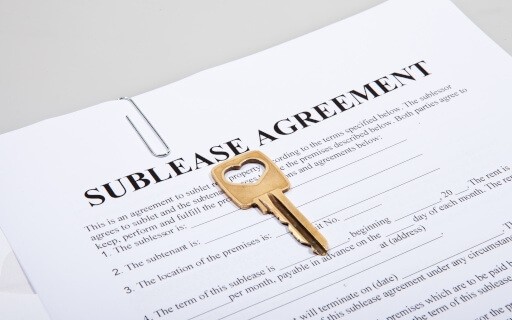With careful planning, you can use your retirement savings to become a successful real estate investor. But like any investment, there are opportunities and risks to consider. To ensure you make a well-informed decision, read this guide and discover if using your IRA or 401k to buy rental properties is right for you.
The Right Retirement Account for Buying Rental Properties
There are two retirement plans you can use to buy rental properties, including:
IRA
The self-directed IRA (SDIRA) is the way to go regarding your retirement accounts. “Self-directed” means an entity (e.g., IRA custodian or financial institution) responsible for Internal Revenue Service (IRS) reporting requirements and recordkeeping accepts alternative investments. Self-directed IRA accounts work independently of the investment or brokerage companies that would otherwise make decisions for you.
401(k)
Buying rental property investments with your 401(k) must be an individual, owner, or self-employed account. Also called a Solo 401k, this is the retirement plan your employer sponsors on your behalf. Like an IRA, self-directed 401(k)s are more flexible regarding the rental properties you can invest in, from single-family homes to apartment buildings to multiplexes.
Important Rules to Know About
Whether you invest with an IRA or 401(k), there are some important considerations and rules you should understand.
SDIRA Rules
- Rule 1: You need a custodian if you want to buy and own a rental property with your IRA. An IRA custodian manages the transactions, paperwork, and financial reporting. While they charge a fee, the custodian ensures you don’t violate any of the strict industry regulations.
- Rule 2: You can only buy rental real estate as an investment—as in, you can’t use it for personal reasons, such as a vacation home, second home, or business office.
- Rule 3: Self-dealing transactions are prohibited, which means you cannot purchase an investment property from disqualified persons, like your spouse, parents, children, IRA service providers, or anyone else that may own over 50% of the property.
- Rule 4: You must use cash to buy a property with your IRA.
- Rule 5: You can’t mortgage the property.
- Rule 6: You can’t work on the property yourself. You must hire someone to do repairs and renovations.
- Rule 7: IRA pays for all expenses, such as utility bills, renovations, property taxes, and building association fees.
- Rule 8: Any income earned or positive cash flow from the rental property goes back into the IRA.
- Rule 9: Your investment must be uniquely titled, meaning you and your IRA are separate entities. Since a rental property is an investment, you must title it in the name of your IRA.
- Rule 10: If you use financing, you must pay an Unrelated Business Income Tax (UBIT).
Self-Directed 401(k) Real Estate Rules
- Rule 1: You cannot use your 401(k) to directly invest in rental properties.
- Rule 2: To invest with your 401(k), some lenders will let you take a loan against it (up to $50,000). The loan must be a non-recourse loan, allowing the lender to take back the asset if you, as the borrower, default.
- Rule 3: In most cases, you must pay back your loan within five years.
- Rule 4: If you don’t repay your loan on time or cash out your 401(k) too early, you must pay a 10% penalty fee (plus taxes according to your tax bracket).
- Rule 5: To avoid penalties while trying to invest, you can roll over your 401(k) to your IRA. However, this option requires you to pay income taxes on the transferred money.
10 Things to Consider When Buying a Rental Property with Your Retirement
Buying an investment rental property is a big deal. Do your due diligence to ensure the process goes smoothly. To help you in that endeavor, here are 10 things you should know about when using your retirement to purchase rental real estate:
1. Making a plan
For your investment to succeed, you must plan accordingly. You should develop a business plan with the following considerations:
- Estimate your operational costs
- Know your purchase budget
- Find your property management, insurance providers, and contractors beforehand.
- Devise exit strategies in case your investments are unsuccessful.
Familiarize yourself with essential rental property information, like market rent prices, vacancy rates, and property values. This ensures you can handle the process like a pro. Also consider an online expense tracking platform, like Apartments.com. You can summarize expenses by property and tax category to easily keep track of what you have to invest in other parts of your business.
2. Contracts and offers
Always filter your contracts, offers, and expenses through the plan. If you were to place your investment under contract, provide earnest money and then transfer the rental property to the IRA, that would be unlawful self-dealing—avoid this. The Trust/LLC is the property purchaser, so their name will appear on the title. You can sign and execute the contract as the manager or plan trustee, but ensure your real estate agent understands these requirements before they write any offers.
3. Revenue and expenses
With retirement plan-held properties, you must pay expenses from your plan accounts, such as management costs, HOA fees, property taxes, insurance, repairs, and maintenance. Whether you pay with a check or debit card, all transactions should go through the plan-held bank account. Remember, if your property generates revenue from rent payments, that money must go back to the retirement plan account.
4. Property management
While you can manage an IRA rental property (so long as you follow IRS guidelines), it’s better to enlist a third-party rental property manager. Generally, they have more expertise and are more knowledgeable about local and state regulations. They can also help screen and manage your tenants, taking a weight off your shoulders so you can focus on other matters.
5. Maintenance and repairs
When it’s time to perform repairs or maintenance, hire an outside contractor who isn’t a disqualified party or person. According to IRS regulations, you cannot provide direct benefit or service to the property. Even for simple tasks like mowing the lawn or furnishing the property with goods, hire someone else to do it.
6. Recordkeeping
As a manager or trustee of your retirement account, you can retain the records for all plan transactions. You should maintain records of every sale, purchase, expense, and change in earnings. Record keeping is especially crucial for auditing and year-end reporting.
7. Insurance
Retirement-held rental investments need the right coverage—your run-of-the-mill property insurance will not do. Get liability and commercial landlord policies to protect your property. Also, make sure to put the insurance in the trust’s name rather than your own.
8. Closing on a rental property
As a signatory for your retirement, you can handle the closing process for your real estate investment. You don’t have to send documents to a third-party custodian for review and approval. This, in turn, simplifies the procedure. But be sure of the following details:
- The IRA or 4019k) Trust is on the title
- Fund the transaction from the retirement plan account
- Verify the plan tax ID is accurately associated with the investment transaction
- You can manage all the paperwork independently
9. Owning your rental property
Unfortunately, there are no tax benefits from owning an IRA-held property, and any income from the investment goes back into your IRA account. Technically, you’re not the official owner, so none of the money goes directly to you until you withdraw it. But the silver lining is you don’t have to pay for any of the repairs, maintenance, or costs associated with owning an investment property.
10. Selling your property
If you decide to sell the property, the IRA will liquidate the investment and revert it to a cash position. There may be a transfer tax for selling your real estate depending on the state, but in general, state and federal income taxes do not apply. At closing, the plan tax ID document is crucial because it signifies to the IRS that your property is non-taxable.
What are the Key Differences Between a 401(k) and an IRA?
Solo 401(k) and SDIRA are viable options for investing in rental real estate. By comparing them, you can more accurately choose which one works best for your specific goals. Here are some key differences between the two retirement plans:
- Any individual can open an IRA, while an employer must establish a 401(k) for their employee.
- There are income limits and criteria for setting up an SDIRA, while there are no limits for investing in a Solo 401(k).
- In an IRA, you can invest up to $6,000 yearly ($7,000 for people aged 50 and up). Comparatively, you can invest up to $19,000 a year in a 401k ($25,000 for people over 50).
- You have more investment options with an IRA than a 401(k).
- You can withdraw money whenever you want with an IRA, while you must wait for a specific distribution event before accessing your 401(k) savings.
Pros and Cons of Using Your Retirement to Invest in Rental Properties
While investing in rental properties seems like a no-brainer, it is a significant undertaking. Understanding the pros and cons of using your retirement to purchase real estate helps you make the most informed decision:
- Pro: Rental properties are resilient against periods of economic instability, stock market fluctuations, or inflation.
- Pro: With an SDIRA, you can buy and sell the property without a 1031 tax-deferred exchange.
- Pro: You don’t have to foot the bill for your property expenses, meaning your personal funds aren’t affected.
- Pro: A SDIRA and 401(k) held investment property can generate tax-free profit growth.
- Pro: With a 401(k), you can use a tax and penalty-free loan.
- Con: Using too much of your retirement to purchase a rental property drastically increases your financial risk and limits your ability to diversify your portfolio.
- Con: You must use your SDIRA account to fund all property expenses; this means a decrease in your savings and retirement funds.
- Con: You miss out on tax benefits.
- Con: Since none of the rental income from the property goes directly to you, you cannot access it until retirement.
- Con: The IRS has a lot of requirements you must adhere to when buying investment properties with a retirement account. As such, there is a lot of paperwork you must complete.
- Con: If you default on your 401(k) loan, there will be a costly penalty to pay.
How to Use Your Retirement to Purchase Rental Properties in 4 Steps
1. Consult with your retirement plan administrator or agent
Contact your plan admin first if you want to use your IRA to invest in a rental property. They often have expert advice on how to enter the rental market. Some IRA custodians don’t allow real estate investments. In such cases, open a self-directed IRA and then look for a firm that will let you invest your retirement into real estate.
2. Familiarize yourself with loan regulations
You should research your local and state loan regulations if you want to use your 401k for rental investments. This information will inform you about what loans you qualify for and how much. In most cases, you can borrow up to half of your 401k’s value but no more than $50,000.
3. Hire a third-party real estate management company
Unfortunately, an IRA-held investment property does not allow you to manage the property. As such, you will need to hire a property management company or a third party to do the work on your behalf. From collecting rent to maintaining the grounds, you must relinquish all management responsibilities and tasks to outside agencies.
4. Monitor your revenue and cash flow regularly
Keep a close eye on your investment to see if it is profitable. Monitoring the financial health of your property is a good practice to maintain. With this data, you can act quickly to address setbacks or even invest more money into the property.
Frequently Asked Questions
How do you buy a rental property with a Roth IRA?
A Roth IRA allows you to purchase a property with post-tax money. However, it differs from an IRA-held property in that generated income and capital gains from your investment are not tax-protected (as they would be for a property bought with SDIRA funds).
Are there any alternatives to buying or investing in a rental property?
There are some alternatives; for example, you could passively invest in rental properties with a real estate investment trust (REIT). A REIT is a company that finances income-generating properties, a service they can perform on your behalf.











